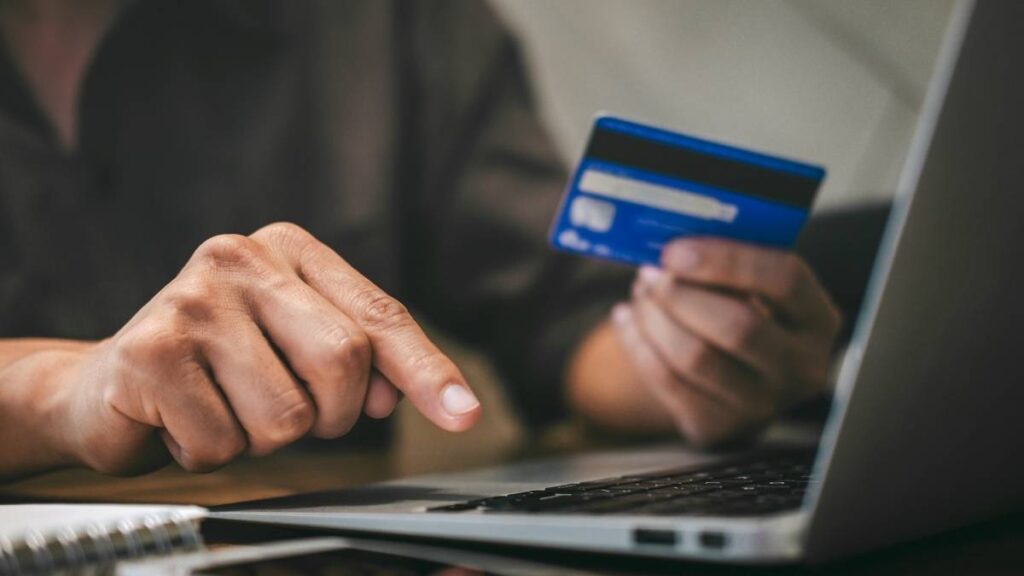
Wondering how to tell a credit card type by its number? Whether you’re an online shopper, an eCommerce business owner, a financial beginner, or a fraud prevention professional, understanding credit card number identification can save time and protect your transactions. By looking at just a few digits, you can identify the card’s network (like Visa or Mastercard) or even the issuer. This guide breaks it down in a simple and practical way, helping you confidently recognize card types for secure payments, fraud detection, or business verification.
Why It’s Important to Identify a Credit Card by Number
Knowing how to tell credit card type by number is a valuable skill for many reasons. From preventing fraud to ensuring smooth payment processing, recognizing a card’s network or issuer can make a big difference for shoppers, businesses, and financial staff.
Fraud Detection & Payment Processing
Credit card fraud is a growing concern. By understanding credit card issuer by number, businesses and fraud prevention teams can spot suspicious transactions. For example, if a card number doesn’t match the expected issuer or network, it could be a red flag. This knowledge also helps payment processors ensure transactions go through smoothly, avoiding declines due to mismatched card types.
Card Network Acceptance (Visa, Mastercard, etc.)
Not all merchants accept every card network. For instance, some businesses take Visa and Mastercard but not American Express due to higher fees. Knowing how to tell credit card type by number helps shoppers confirm whether their card will work before making a purchase, saving time and avoiding awkward declines.
Business Use: Verifying Customer Payments
For eCommerce businesses or small retailers, verifying customer payments is critical. By using credit card number identification, you can confirm the card type and issuer, ensuring the payment is legitimate. This is especially helpful for high-value transactions or when dealing with new customers.
How to Tell Credit Card Type by Number
The key to credit card number identification lies in the card’s digits. Let’s break it down step-by-step so you can easily identify the card network and issuer.
First Digit = Card Network
The first digit of a credit card number is called the Major Industry Identifier (MII). It tells you the card’s network, such as Visa, Mastercard, or American Express. Here’s a simple table to guide you:
| Starting Digit | Card Type |
|---|---|
| 3 | American Express, JCB, Diners Club |
| 4 | Visa |
| 5 | Mastercard |
| 6 | Discover |
For example, if a card starts with a 4, it’s a Visa. If it begins with a 5, it’s a Mastercard. This quick check is the first step in how to tell credit card type by number.
First 6 Digits = BIN (Bank Identification Number)
The first six digits of a card make up the Bank Identification Number (BIN) or Issuer Identification Number (IIN). This code does more than just identify the network—it pinpoints the specific issuer, like a bank or credit union, and sometimes even the card’s product type (e.g., business, student, or rewards card).
For example:
- A Visa card starting with 4147 might be issued by Chase Bank.
- A Mastercard starting with 5213 could come from Capital One.
The BIN/IIN helps businesses and fraud prevention teams verify that the card matches the issuer’s records, ensuring secure transactions. You can use a BIN/IIN lookup tool to get detailed issuer information.
Examples of Credit Card Numbers and Their Types
Let’s look at some examples to make credit card number identification crystal clear. Each card type has distinct patterns, and we’ll highlight popular cards and their benefits.
Visa Example – Starts with 4 (e.g., 4147, 4400)
Visa cards always start with a 4. Common prefixes include 4147, 4400, or 4532.
Popular Visa Cards:
- Chase Sapphire Preferred: Offers generous travel rewards, including 2x points on travel and dining.
- Bank of America Cash Rewards: Provides cashback on everyday purchases, with customizable categories.
Visa is widely accepted globally, making it a go-to choice for shoppers and businesses.
Mastercard Example – Starts with 5 (e.g., 5156, 5213)
Mastercard numbers begin with a 5, often with prefixes like 5156 or 5213.
Popular Mastercard Cards:
- Citi Double Cash: Earns 2% cashback on all purchases (1% when you buy, 1% when you pay).
- Capital One Venture: Great for travel, with flexible miles redemption options.
Mastercard is another widely accepted network, ideal for both online and in-store purchases.
American Express – Starts with 34 or 37
American Express (Amex) cards start with 34 or 37. They’re less common but popular for premium rewards.
Popular Amex Cards:
- Amex Platinum: Offers luxury travel perks, like airport lounge access and travel credits.
- Amex Blue Cash Preferred: Provides high cashback on groceries and streaming services.
Amex is often used by businesses and frequent travelers but may not be accepted everywhere due to higher merchant fees.
Discover – Starts with 6011 or 65
Discover cards typically start with 6011 or 65, making them easy to spot.
Popular Discover Cards:
- Discover it Cash Back: Features rotating 5% cashback categories, like gas or restaurants.
- Discover it Miles: Offers 1.5x miles on all purchases, great for simple rewards.
Discover is widely accepted in the U.S. but may have limited international use.
How to Look Up a Card’s BIN or Issuer Info
If you need more details about a card’s issuer, a BIN/IIN lookup is the way to go. Here’s how to do it safely:
- Use secure BIN lookup tools: Websites like BIN Database or IIN lookup sites provide issuer details based on the first six digits. Always choose reputable, secure platforms.
- Check with your card issuer’s customer service: If you’re unsure about a card, contact the bank or credit union directly for verification.
- Use online merchant tools for transaction validation: Many payment processors offer built-in BIN lookup features to confirm card details during transactions.
- Always confirm via secure sources only: Avoid sharing card numbers on unverified websites to protect against fraud.
These steps ensure you can confidently verify Visa, Mastercard, Amex numbers, and more.
Things You Shouldn’t Do
While learning how to tell credit card type by number is helpful, there are some practices to avoid for safety:
- Don’t rely on partial card numbers for full verification: The first six digits give you the BIN, but you need secure tools to confirm the issuer fully.
- Never store or share full card numbers without encryption: Always use secure, encrypted systems to handle card data, especially for businesses.
- Don’t use card numbers to guess personal info: Card numbers alone don’t reveal sensitive details like names or addresses, so avoid making assumptions.
By following these guidelines, you can stay safe while using credit card number identification.
FAQs
Can I tell the card issuer by number alone?
Yes, the first six digits (BIN/IIN) can identify the issuer, like Chase or Capital One, using a BIN lookup tool. However, you’ll need secure sources to confirm details beyond the card network.
What are the safest ways to verify a credit card type?
Use trusted BIN lookup tools, contact the card issuer directly, or rely on merchant payment systems with built-in validation. Always avoid sharing full card numbers on unsecured platforms.
Is the BIN the same as the full card number?
No, the BIN is only the first six digits, identifying the issuer and network. The full card number includes additional digits for the account and security checks.
Read Also- 5466 Credit Card Type
Conclusion
Learning how to tell credit card type by number is a powerful tool for secure transactions, fraud detection, and smarter shopping. By recognizing the first digit for the card network and the first six digits for the BIN, you can quickly identify Visa, Mastercard, Amex numbers, and more. Whether you’re an online shopper, a small business owner, or a fraud prevention professional, this knowledge helps you make informed decisions. Always use verified tools like BIN lookup sites and stay cautious with card data. Credit card numbers can reveal a lot—when used responsibly and securely, they empower safer financial choices.

Emma Rose is a U.S.-based personal finance writer and a regular contributor at Cardix.us. She focuses on topics like credit cards, credit scores, and everyday money management. Emma’s writing makes complex financial concepts simple and practical, helping readers make smarter credit and spending decisions with confidence.

